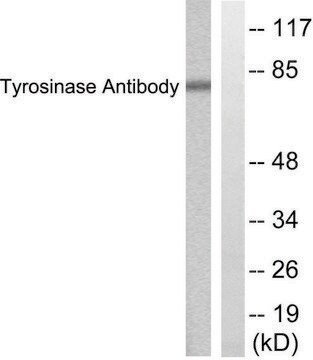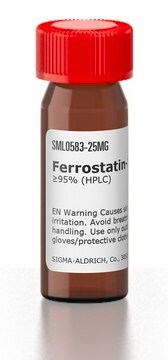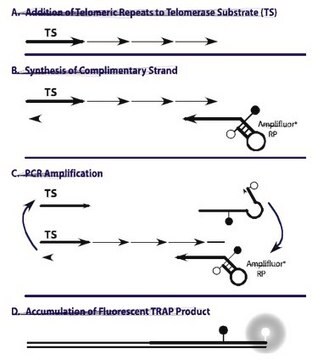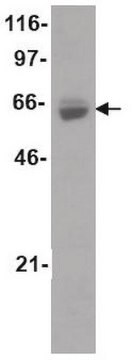推荐产品
特異性
Tyrosinase
免疫原
Purified recombinant Tyrosinase corresponding to residues 5-456 of human Tyrosinase
應用
Not recommended for Immunoprecipitation
Research Category
Neuroscience
Neuroscience
Research Sub Category
Neurofilament & Neuron Metabolism
Neuronal & Glial Markers
Neurofilament & Neuron Metabolism
Neuronal & Glial Markers
This Anti-Tyrosinase Antibody, clone T311 is validated for use in WB, IH for the detection of Tyrosinase.
品質
routinely evaluated by immunoblot on RIPA lysates from SK-MEL-19 cells
標靶描述
70-80kDa
外觀
Protein G Chromatography
0.1M Tris-glycine, pH 7.4, 0.15M NaCl, 0.05% sodium azide before the addition of glycerol to 30%
Format: Purified
儲存和穩定性
2 years at -20°C
法律資訊
UPSTATE is a registered trademark of Merck KGaA, Darmstadt, Germany
免責聲明
Unless otherwise stated in our catalog or other company documentation accompanying the product(s), our products are intended for research use only and are not to be used for any other purpose, which includes but is not limited to, unauthorized commercial uses, in vitro diagnostic uses, ex vivo or in vivo therapeutic uses or any type of consumption or application to humans or animals.
未找到合适的产品?
试试我们的产品选型工具.
儲存類別代碼
10 - Combustible liquids
水污染物質分類(WGK)
WGK 1
Structure-toxicity relationship of phenolic analogs as anti-melanoma agents: an enzyme directed prodrug approach.
Vad NM, Kandala PK, Srivastava SK, Moridani MY
Chemico-Biological Interactions null
Efficacy of acetaminophen in skin B16-F0 melanoma tumor-bearing C57BL/6 mice.
Nikhil M Vad,Shashi K Kudugunti,Daniel Graber,Nathan Bailey,Kalkunte Srivenugopal,Majid Y Moridani
International journal of oncology null
Hee-Sun Lim et al.
Chonnam medical journal, 52(1), 45-52 (2016-02-13)
As a key regulator of melanogenesis, p53 controls microphthalmia-associated transcription factor (MITF) and tyrosinase expression. The anti-oxidant enzyme heme oxygenase-1 (HO-1) is induced by various forms of cellular stress and diverse oxidative stimuli. However, few studies have examined the role
Y T Chen et al.
Proceedings of the National Academy of Sciences of the United States of America, 92(18), 8125-8129 (1995-08-29)
Tyrosinase (EC 1.14.18.1), the key enzyme in melanin synthesis, has been shown to be one of the targets for cytotoxic T-cell recognition in melanoma patients. To develop serological reagents useful for immunophenotyping melanoma for tyrosinase, human tyrosinase cDNA was expressed
Shashi K Kudugunti et al.
Chemico-biological interactions, 188(1), 1-14 (2010-08-06)
In the current work, we investigated the in vitro biochemical mechanism of Caffeic Acid Phenylethyl Ester (CAPE) toxicity and eight hydroxycinnamic/caffeic acid derivatives in vitro, using tyrosinase enzyme as a molecular target in human SK-MEL-28 melanoma cells. Enzymatic reaction models
我们的科学家团队拥有各种研究领域经验,包括生命科学、材料科学、化学合成、色谱、分析及许多其他领域.
联系技术服务部门







